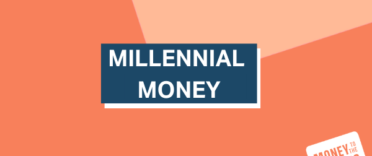
How to become debt free
Pay off debt with savings
A lot of people continue to save while they still owe money. This is a false economy, especially, in today’s low interest rate world. If you are earning 3-4% (gross) a year on your savings but are paying 17-18% on any credit card debt you are effectively paying to save money. Think about it for a second. If your credit card and savings account are with the same institution they give you 4% pa (which for a basic rate tax payer nets down to 3.2%) while you give them 18% back!? In simple terms, on £5,000 this set up would cost you around £750 a year! So if you pay off your debt with savings you will save a lot of money.
Get the best interest rate
0% balance transfer deals - these days credit card companies are competing for your custom and there are some good 0% balance transfer deals out there. These work by allowing you to transfer an existing balance, for a one-off fee of usually between 2-3%, to a new credit card company who then agree to not charge any interest on your balance for a fixed period of time (often 12 months). Upon transfer every penny you repay each money reduces your outstanding balance by the same amount. On a normal deal only part of your monthly repayments actually go towards reducing your debt. The rest pays the interest charged by the credit card company. However, once the 0% offer period ends you usually end up on the credit card company’s sky high rate. This is what they want you to do so be careful. Make sure you note when the 0% honeymoon period ends and secure a new 0% deal well in advance. In theory there is nothing to stop you moving your funds from one deal to the next ad infinitum (apart from your credit score) but you will obviously incur a transfer fee - so make sure you check that this is reasonable. By repeating this process until your debt is paid off could save your thousands of pounds in interest as well as slash the time it takes to become debt free.
Long-term low rates- rather than charging you 0% on the transferred balance for a limited time only an alternative is a long-term low rate deal. With these the credit card company will charge something like 6-7% on the life of the balance until it is paid off. These deals may suit people who do not want the hassle of transferring their credit card balance every year to secure the best rate 0% deal. But while long-term low rate deals are better than the normal extortionate credit card rates it will take you longer to repay your debt, than the 0% route, and cost you more in interest. If you’re serious about clearing debt you need to be organised (see my Money tip #37 – Use a diary) as not taking your finances seriously probably got you in this mess to start with.
Obviously the amount of debt restructuring you can do, as described above, will be limited by, among other things, the amount of debt you have as well as your credit rating. So restructure as best you can and where you can’t call your lenders and ask for a better rate. If you have kept your account in good order, i.e. you have made regular on-time payments, pay more than the minimum each month, they may offer you a better deal.
Once you have cleared as much debt as you can with savings and restructured as described grab a pen and paper and write down the following:
- Firstly list each of your credit cards. You’ll want to include the outstanding balance and interest rate for each. You should know all this information by now but if not it will be on your last statement.
- Order list so that your credit card with the highest interest rate is at the top and the lowest is at the bottom.
- List the minimum monthly repayments next to each card.
- At the bottom of your list total up your outstanding balances as well as the minimum monthly repayments
Now you need to draw up a repayment plan.
The best repayment plan
The total monthly minimum is your absolute lowest monthly payment, but if possible you should always try to more than this. The aim is to clear debt as quickly as possible. Set up monthly direct debits for each card so that the repayments are taken directly from your bank account. This way you avoid missing any payments which could adversely affect your credit score and hinder any future restructuring.
Make sure that the direct debits are set up for the minimum monthly payment for each card except the one at the top of your list. Remember, that one has the highest interest rate and it’s costing you the most money by maintaining a balance. So whatever additional money you are able to pay (over and above the total monthly minimum) apply it to this card. If you really can’t afford to pay more than the monthly minimum then console yourself with the fact that by taking control of your finances, as described, you are already well on your way to repaying your debt.
Keep up you payments (which will also help your credit score) until the first card is paid off. When that card is paid off, continue with the minimum payments on the other cards, but now take the amount you were paying on the first card and apply it to the second card on your list, in addition to the minimum payment you were paying on the second card already.
Keep repeating this process until all your debt is paid off, remembering to restructure things as and when your balance transfer deals expire.
The future
Bear in mind that repaying all your debt will take time. But each day that passes where you’ve stuck to the plan is another step closer to being debt free. Every journey begins with a first step. Work out when your repayment plan should make you debt free and put it in the diary. It may be months or even years but keep the goal in mind. By setting up the direct debits and having a plan in place you will feel a lot better about things because you have taken control of your debt.
Finally, now that you are moving in the right direction DO NOT SPEND ANOTHER PENNY ON CREDIT CARDS AGAIN. If you do then all your good work will be undone. In addition, spending on a card with a balance transfer deal, at the moment, means that you will get hammered by the credit card company. This is because the 0% deal applies to balance transfers and not future spending. Accordingly any new debt put on a card will be charged at their normal extortionate interest rates. But even more outrageous is the fact that your monthly payments are directed to the 0% part of your balance meaning that the newer balance sits there accruing more and more interest. The good news is that this situation should be changing next year.( see Headline of the Day: New credit card protection will allow consumers to reject interest rate hikes)
Note: In this post I have referred to credit card debt but if you have unsecured loans or overdrafts this can restructured and repaid in the same way.





